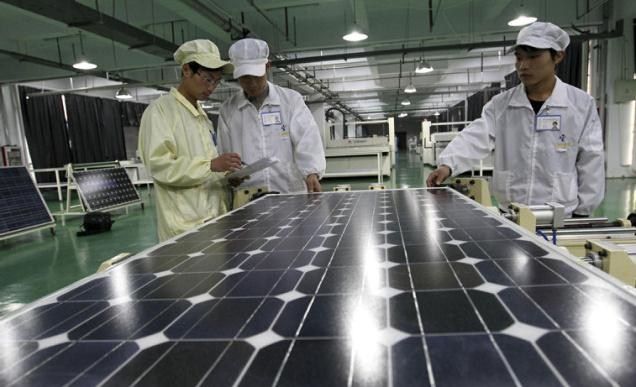How do solar panels and what awaits them?
Once fossil energy sources are exhausted, and humanity will be two options: either to find a way to create tiny controlled fusion reactions, or to use energy as efficiently as possible the natural fusion reactor – the sun. Advantages of solar energy is that it can develop gradually adapting to the current needs and moving to the point where it will provide our electricity needs. But what is a solar panel, the central element of solar energy and how it works?
The solar cell (cell, cell) or a photocell – is any device which can convert the energy of a photon of light into electricity. Not all photovoltaic solar energy is, as some technologies collect heat absorbed photons, not their direct energy. However, with this definition, the term “cell” covers a wide range of different technologies.
They all have one thing in common – they use the photon energy to cause the electrons in the semiconductor material of the non-conducting state to conducting. This is complicated by the fact that not all of the photons are identical. Light comes in the form of different wavelengths and any semiconductor material may not absorb it completely. This means that to be effective need to create a hybrid cell with multiple absorbent materials.
Each of semiconductor material has a “forbidden zone” or the energy spectrum of electrons that the material will not survive. This area lies between the excited and ground state of the electron. An electron at rest is to get enough energy to go through this gap. Silicon has an easy and achievable bandgap, which allows silicon to move quickly between the conductive and non-conductive state, depending on the position of the electrons.
Such material is graphene, may be a better basis for the photovoltaic element than silicon, thanks to the incredible efficiency of electricity and the possibility to place them more tightly, but the band gap creates a big problem – graphene can not switch between the states only by the energy of the photons. Real progress will be possible when there will be an affordable supermaterial combining proper band gap and better mechanical and electronic properties than silicon. A long intermediate update may gradually increase functionality silicon panels.
Anti-reflective coating increases the amount of light absorbed, and the chemical “doping” transistor can improve the optical properties of silicon. Some installations use the solar mirrors to concentrate solar radiation in specific locations with a high absorption capacity. Many devices capture light so that the incoming rays are reflected in the device is not yet fully absorbed. And last fall, researchers at the University of Michigan have developed a fully transparent solar cells.
Heat can also be an important part of the solar panels, if not absorbed by the light radiation is absorbed as heat. Using this heat, even for small targets can raise the efficiency of solar home stations.
There are now a number of semi-fantastic concepts that imply the construction of space solar installations, spectacular light before it enters the Earth’s atmosphere. For example, Japan wants to build a gigawatt solar station, and transfer energy from space to the Earth’s surface wirelessly. To do this, they are going to use lasers, but no one knows how to behave in such a device in practice.
For several decades, scientists are looking for a revolutionary approach produce electricity from sunlight. But the reality is that, most likely, there will be no instant breakthrough. The technology will be gradually developed until it is sufficiently effective.
All kinds of solar energy will make a difference when clean energy will be developed on a global scale. If fusion energy as it breaks or nuclear power plants will not be safer, it could be argued that solar energy will become an essential part of the energy of the future.




